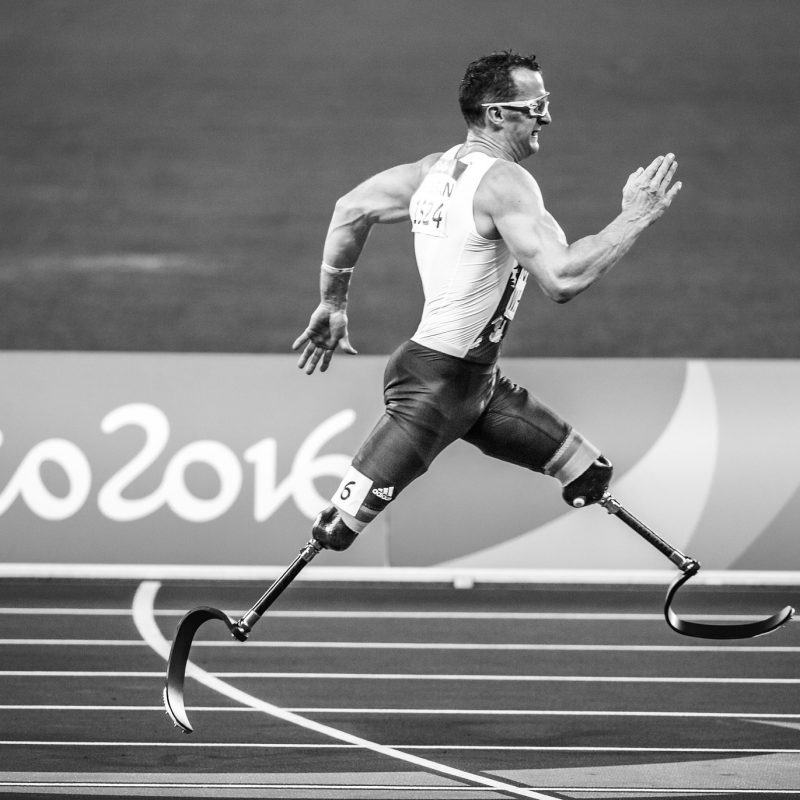From disaster to triumph – what does it take to be brilliantly resilient?

We’ve had the privilege and pleasure over the last 5 years, to work with some of the world’s best Paralympic athletes, many of whom have had to deal with massive, life changing set backs and yet from that, have built brilliant resilience levels.
We think the insight we’ve gained from this is worth passing on. Most of us are inspired and amazed at the resilience of Paralympians and wonder what we’d do, or would have done, if the same happened to us.
Coming through huge setbacks to not just be stronger, but more resilient and ready for the challenges we face in the future, is not easy, but is eminently achievable.
High performance headlines
Resilience isn’t a quality. It’s a learned skill and mindset. Here’s some key facts:
- Resilience can be developed from massive setback and challenge – but only if you do the right things to use those experiences helpfully
- Mindset is key – an opportunity and ability mindset, and focus on future proactivity is vital
- Constant thinking about what’s coming and how to be ready. Disabled athletes very practically have to do this in daily life. Successful ones extend that thinking and approach to their performance, so they have high resilience readiness levels
The full viewpoint
I’ve had the honour of working with Paralympic athletes for the last 10 years. The insight it’s given me in to ‘the human condition’ (as psychologists would say) has been immeasurable and fascinating. It’s provided me with a different perspective on ‘resilience’ and one that’s helped shape our view of resilience at PlanetK2.
Many, but not all, Paralympic athletes become Paralympic athletes because of a sudden, unexpected and life changing event. Others are born with a congenital disability. Both types of Paralympic athlete can teach us much about how to build resilience readiness and how to be a great performer, by virtue of their status being amongst the worlds best at what they do AND by their proven ability to use their experience to fuel their resilience (…the two are related!).
Resilience developed through ongoing challenge
Paralympic athletes who have been born with a disability are faced with a particular set of demands that clearly present a particular set of challenges. They learn about managing these very early on in life. Without wanting to typecast Paralympic athletes who fit this category, a general observation is that their resilience comes from an early acceptance of their condition as ‘normal’, and a focus on performing with that disability. Parents and other key adult figures will be influential in how they view themselves and choose their attitude. Some of the best and most inspirational examples of athletes with congenital disabilities, are those with not just a comprehensive understanding of the conditions they’re in and what that means for them, but also with an opportunity rather than challenge mindset i.e. they accept their disability completely, don’t see it as an impediment but the reality and at times, an opportunity.
They’re also acutely aware and focused on their ABILITY, on what they can do. They know what strengths they have. They know how they’ve dealt with challenge before. They absolutely know what to do – practically and intellectually – to be ready to perform in whatever (challenging) situation they’re in now and in the future. This approach has been not just important, but absolutely necessary for them as high performing athletes. Faced with daily ‘challenge’ in life, a mindset and approach that focuses on what they’re not able to do would be incredibly unhelpful and negatively impact their readiness to perform.
Resilience developed after a traumatic event
Paralympic athletes who have experienced a disabling event also show really high levels of resilience. While there’s some common thinking and behaviours with those who have a congenital disability, there’s also a few differences in their experience and resilience recipe that are worth thinking about.
The impact of a sudden trauma on one’s psychological self, as well as physical self, is massive. Overnight, who you are and what you’re capable of changes, and that sometimes dramatic change in identity is likely to be the greatest psychological challenge you have ever faced. You don’t just have to practically learn how to function differently, you have to process and face that you are different, that what you’re capable of is likely to be different and you’ll have a different future than you’ve previously envisaged.
Mindset again plays a part in how quickly you transition through this stage of adjustment and become a high performer. Support from loved ones, as well as some professional help, plays a role. As soon as there’s been sufficient psychological adjustment, the focus shifts to rewriting a future and a sense of ability.
Successful Paralympic athletes who have become disabled through a traumatic event demonstrate high resilience readiness. They use their experience of having successfully transitioned through the most challenging circumstances imaginable, to keep things in perspective (nothing can ever be as challenging again) and to fuel their confidence that they’ve got the skill and ability to be ready and respond to anything that does happen. It’s an inner sense of confidence and calmness. It’s a skill that’s been developed, they’ve worked on their awareness of what’s helped them come through the worst and have proactively built a resilience recipe that they follow on a daily basis (and when needed most).
Takeaways
While you may not (or may!) have come through challenges like a Paralympic athlete, there’s much you can learn from their example. Understand the conditions you’re in or will be in. Choose your mindset and focus on stuff in your control and your ability. Know what’s helped you to be ready and perform through challenging times in the past. Use that insight to ensure you’re as ready and resilient as you can be. It’s all a choice…
